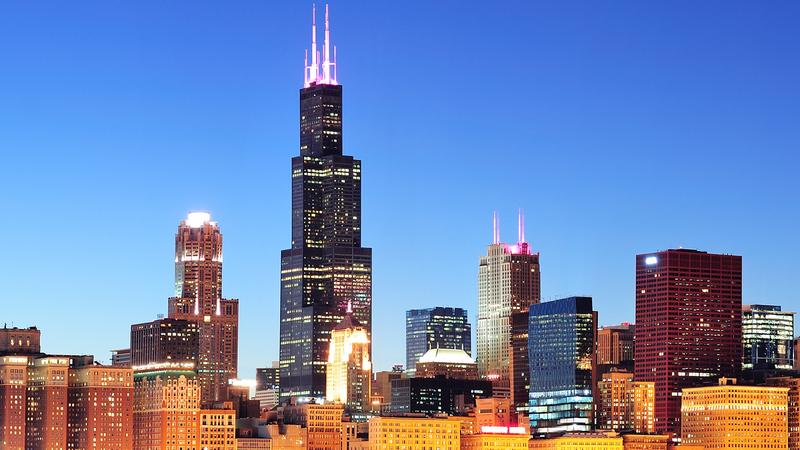
From the day it opened in 1973 until it was eclipsed by Malaysia's Petronas Towers in 1998, the Willis Tower (née Sears Tower) was the tallest building in the world. Constructing it was a major feat of engineering, because once you get a building that far off the ground, the wind can really start to mess with its structural integrity. And Chicago isn't called the Windy City for nothing.

Swaying In the Sky
Picture a piece of uncooked spaghetti inserted vertically into the ground so that it stands straight up, with a couple of inches of "foundation" underneath. Imagine giving the spaghetti a little slap. Most likely, it'll break. Now, picture the same piece of spaghetti, cooked and dangling from your fingertips. This time, you can slap the spaghetti all you want, but it will just flop around, never break.
The lesson? You gotta bend if you don't want to break. That's one of the principles behind the design of the Willis Tower. We've already told you about how the design broke engineering barriers, but there's one feature of the structure that we left out. The Willis Tower is designed to withstand the heavy winds coming off Lake Michigan, and that means that if you're standing at the top, you can feel it sway up to 3 feet (about 1 meter) in both directions before you should start to feel worried. Even on a calm day, the tower generally sways about 6 inches (15 centimeters) in both directions. For comparison, the Empire State Building is supposed to move about an inch and change even in the face of 100 mile-per-hour (160 kilometer-per-hour) winds.
But forget about being worried — you probably wouldn't even notice. Just search for videos of the Willis Tower swaying. You'll mostly find the interiors of offices, where hapless workers suddenly realize they're moving back and forth because their blinds are swaying and their water is moving on its own.
A New Way to Build
The tower's height and flexibility are all thanks to structural engineer Fazlur Rahman Khan's innovative tube design, which cut way back on the necessary material and made the entire building much lighter than anything of comparable size. Khan built the structure as a hollow steel tube instead of a solid column, an innovation that would guide skyscraper architecture for years afterward.
Winds aren't the only reason to build a hollow building. Architects all over the world have taken Khan's flexible principles to heart, allowing their skyscrapers to shift and sway and keep on standing even during severe earthquakes. In fact, many experts even think that modern skyscrapers could be the safest place to be during a major quake. It all just goes to show how a little outside-the-box thinking allows great things to happen.
Eclipse: تحت الشعاع قرار دادن
Far off: دور افتاده/ پرت
Integrity: استحکام
Vertically: عمودی
Foundation: فونداسیون/ شالوده
Underneath: پایین/ زیر
Dangle from: آویزان بودن / معلق بودن
Fingertips: نوک انگشتان
Bend: خم شدن
Barrier: سد/ مانع
Withstand: دوام آوردن/ تحمل کردن
Sway: تاب خوردن/ نوسان داشتن
Hapless: بدشانس
Hollow: پوک/ تهی
Solid: جامد/ صلب
Column: ستون
Principle: اصل/ قاعده
Quake: لرزش





